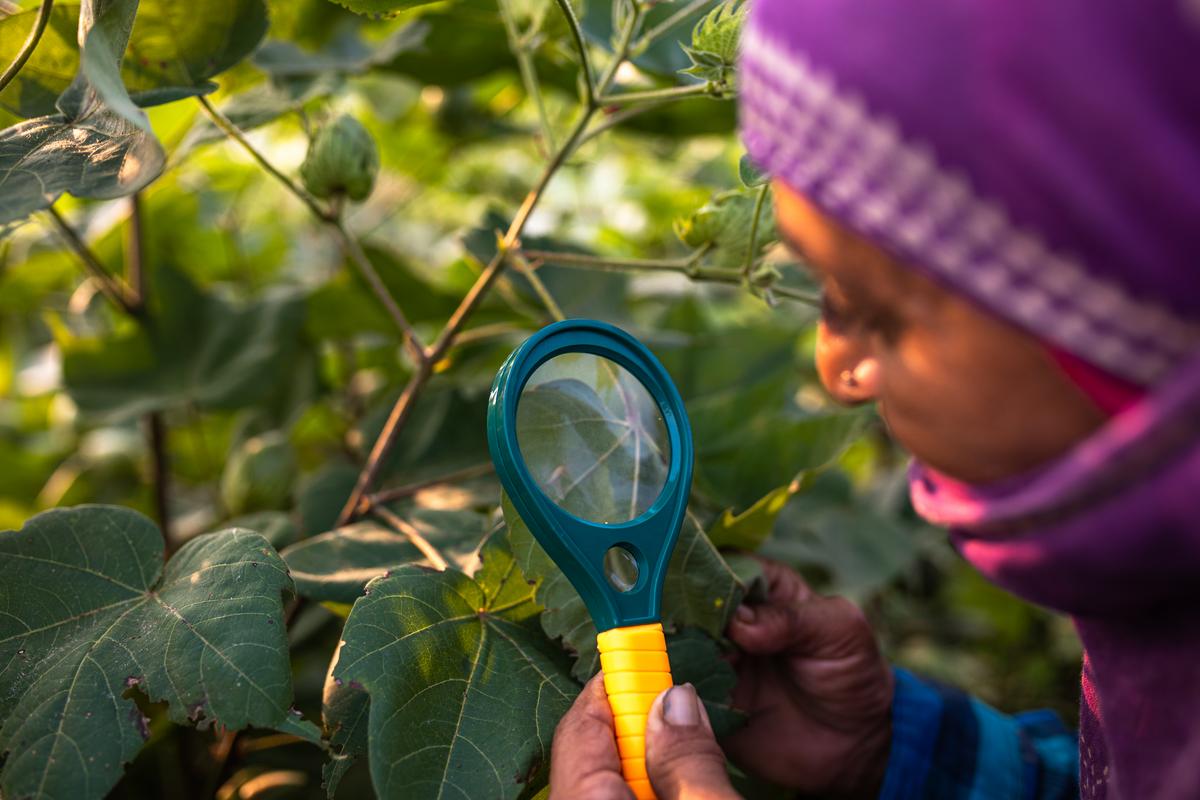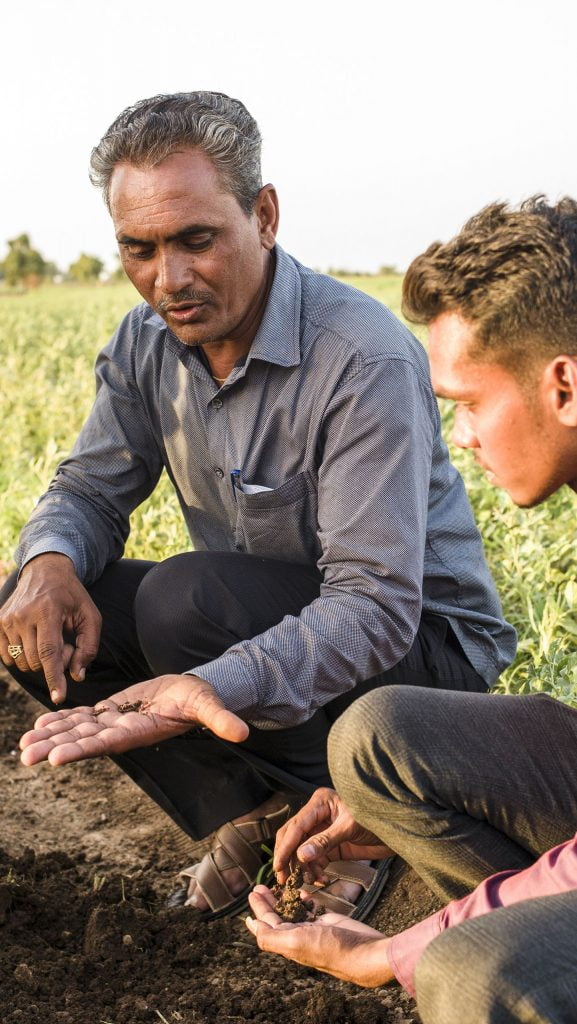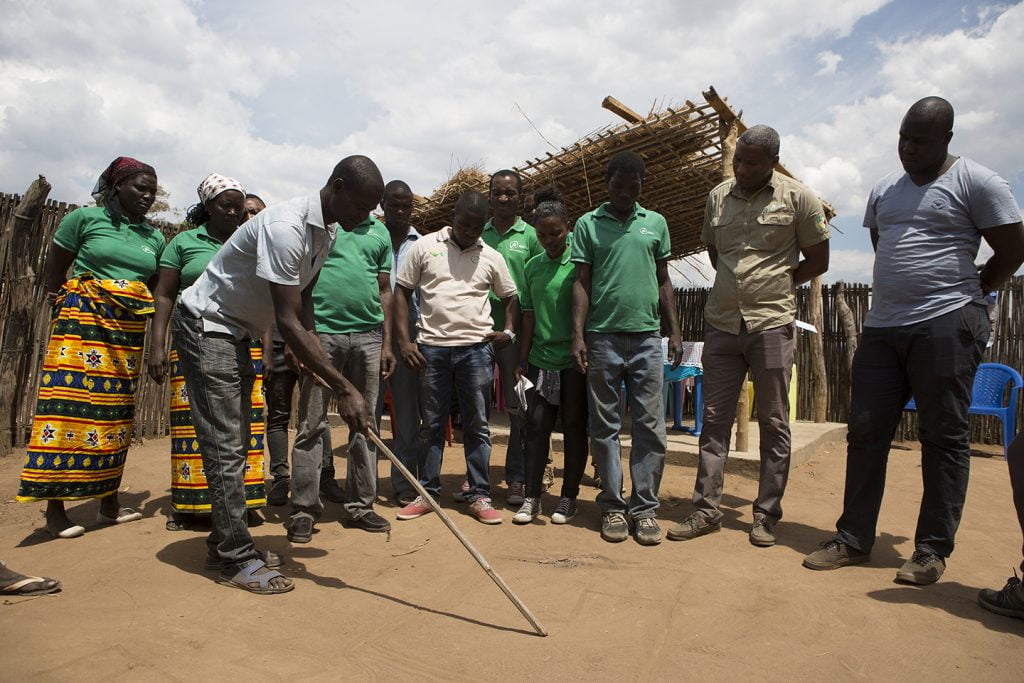
According to the Global Assessment Report on Biodiversity and Ecosystem Services, around one million plant and animal species face extinction — many within decades — if nothing is done about it. Agriculture is one of the main drivers of this species loss, with more than one-third of the world’s land and nearly 75% of freshwater resources used for farming or livestock. This is why we take a thoughtful approach to land use at Better Cotton to protect and increase biodiversity on cotton farms around the world.
How Cotton Production Impacts Biodiversity

Biodiversity refers to the variety or range of life in a particular area. This includes animals, plants and micro-organisms at the genetic, species and ecosystem levels. Besides its aesthetic and ethical value, biodiversity is, most importantly, the backbone of resilient ecosystems and a stable climate.
In some parts of the world, an overreliance on chemical pesticides and fertilisers in agriculture can be a significant driver of biodiversity loss. In addition, land used for the production of crops has typically been cleared of vegetation and natural habitats. This habitat clearing has a direct and significant negative impact on biodiversity, often reducing or eliminating the breeding, foraging or migratory routes of many species. A more diverse habitat on and around a farm supports a more diverse range of species. This increases competitors for potential pests and is ultimately beneficial for the resilience of farming systems.
To lessen their impact on biodiversity, Better Cotton Farmers learn ways to conserve or enhance areas of natural habitat on their land and adopt practices that minimise the negative impact on the habitat surrounding their farm.

Biodiversity and Land Use in the Better Cotton Principles and Criteria
Principle Four of the Better Cotton Principles and Criteria requires Better Cotton Farmers to adopt a Biodiversity Management Plan that conserves biodiversity on and around their farm.
A Biodiversity Management Plan has five parts:
- Identifying and mapping biodiversity resources
- Identifying and restoring degraded areas
- Promoting populations of beneficial insects through an Integrated Pest Management plan, and the banning of highly hazardous pesticides.
- Ensuring crop rotation
- Protecting riparian areas (the land along a river or stream)
Better Cotton also supports farmers to adopt an Integrated Pest Management strategy that enables them to implement more diverse pest control techniques, reducing their reliance on chemical pesticides. This might include using crop rotation to break pest and disease cycles, creating homemade pesticides from ingredients found in nature or encouraging bird and bat species that act as predators to cotton pests.
Beyond the individual level, we encourage farmers to work collectively with local villages and neighbouring farmers to protect the ecosystems and land surrounding their farm.
Better Cotton Approaches on Land Use Change

Protecting High Conservation Value Areas on Better Cotton Farms
All land areas have inherent cultural or environmental features worthy of protection. These features, or conservation values, can be anything from the presence of a rare animal or plant species to a sacred cultural site or natural resources used by residents.
The Better Cotton Standard System outlines a High Conservation Value (HCV) approach to cotton farming. This means that before Better Cotton Farmers can convert any land for cotton production, they must complete a HCV assessment. The assessment guides them to collect field data, consult local stakeholders, such as community leaders and indigenous people, and analyse any existing information to identify HCVs in their landscape. Once farmers identify HCVs, we help them manage and protect them.
One way we do this is by helping Better Cotton Farmers understand the potential risks to HCVs in and around their farms. In close collaboration with the High Conservation Value Resource Network, we developed a Better Cotton HCV risk-based assessment to help farmers ensure that values are not damaged by expanding cotton operations.
ATLA — Working with local stakeholders to improve the landscape around cotton farms
We are also exploring how we can integrate a landscape approach into the Better Cotton Standard System. Through our Adaptation to Landscape Approach (ATLA) project, which kicked off in June 2020, we are bringing together diverse stakeholders in a particular region to work on sustainability goals. The project aims to address issues like water stewardship, habitat conversion, land rights and rural development at a larger scale, rather than looking at the sustainability of a single farm or producer unit alone. The project runs through June 2022, and will include two pilot projects in Pakistan and Turkey. The project is made possible through a two-year grant from the ISEAL Innovations Fund, which is supported by the Swiss State Secretariat for Economic Affairs SECO.

How Better Cotton Contributes to the Sustainable Development Goals
The United Nation’s 17 Sustainable Development Goals (SDG) provide a global blueprint for achieving a sustainable future. SDG 15 states that we should ‘protect, restore and promote sustainable use of terrestrial ecosystems, sustainably manage forests, combat desertification and halt and reverse land degradation and biodiversity loss’.
By identifying, mapping and restoring or protecting natural resources on and around their farms, Better Cotton Farmers are doing their part to not only reduce the stress that life on land faces but also help it to thrive.
Learn more
- About the Better Cotton Principles and Criteria
- About our biodiversity and land use impacts in the Better Cotton Initiative Farmer Results Report
- About adapting to a landscape approach
- Read these stories from the field on pesticides and crop protection practices:


